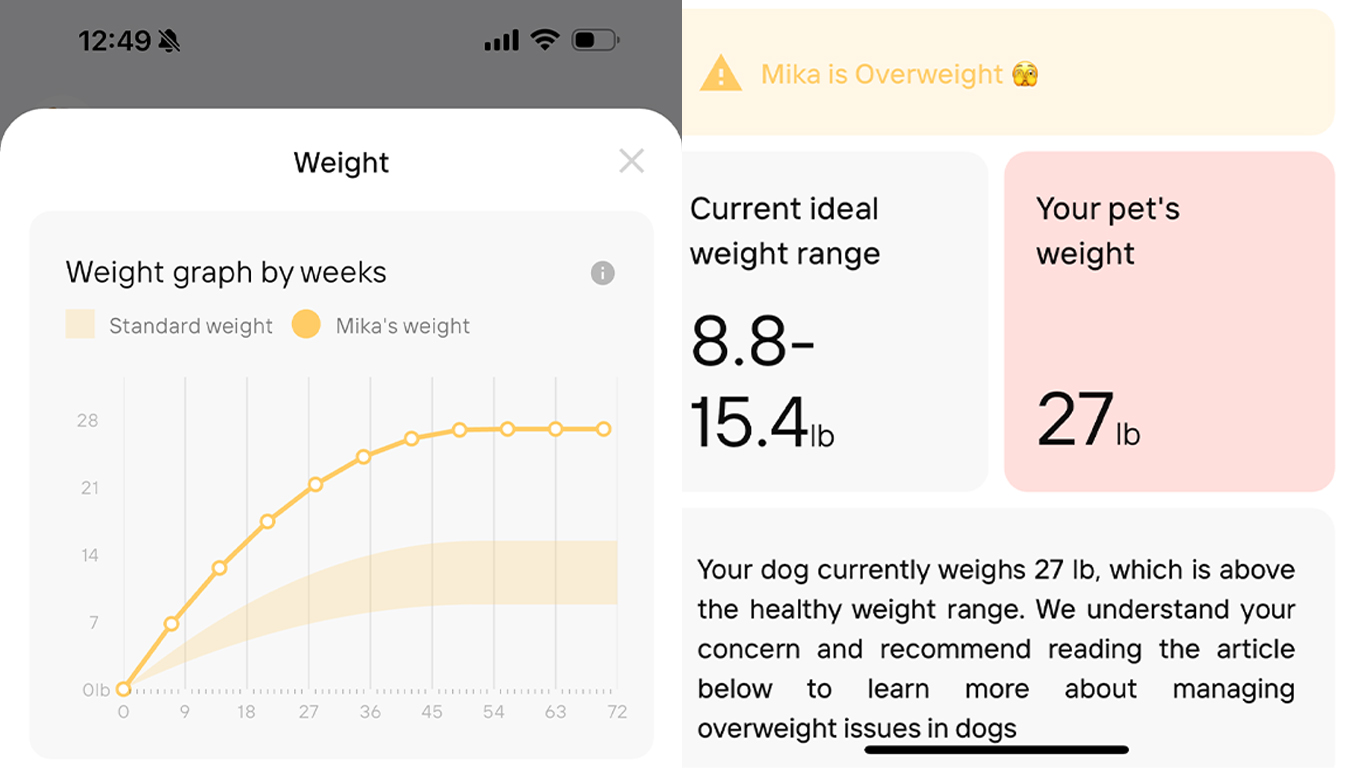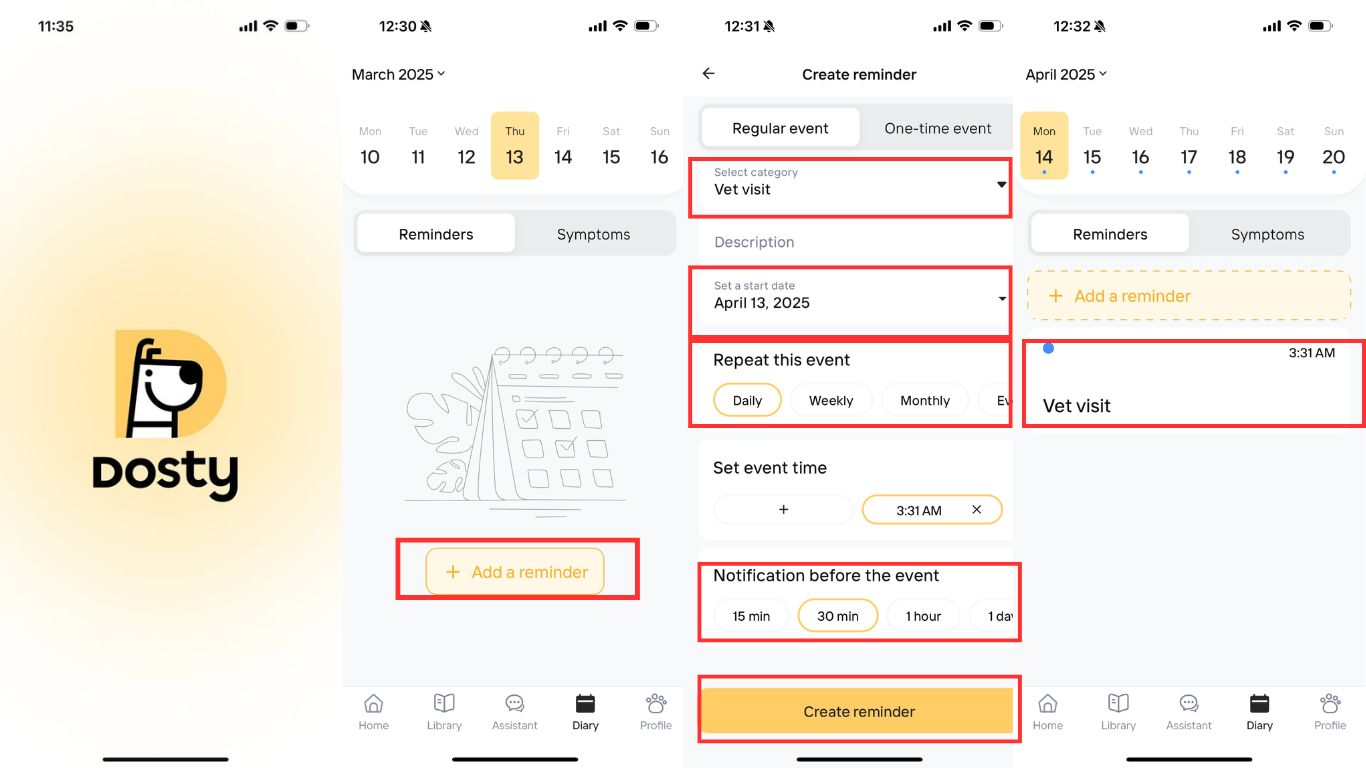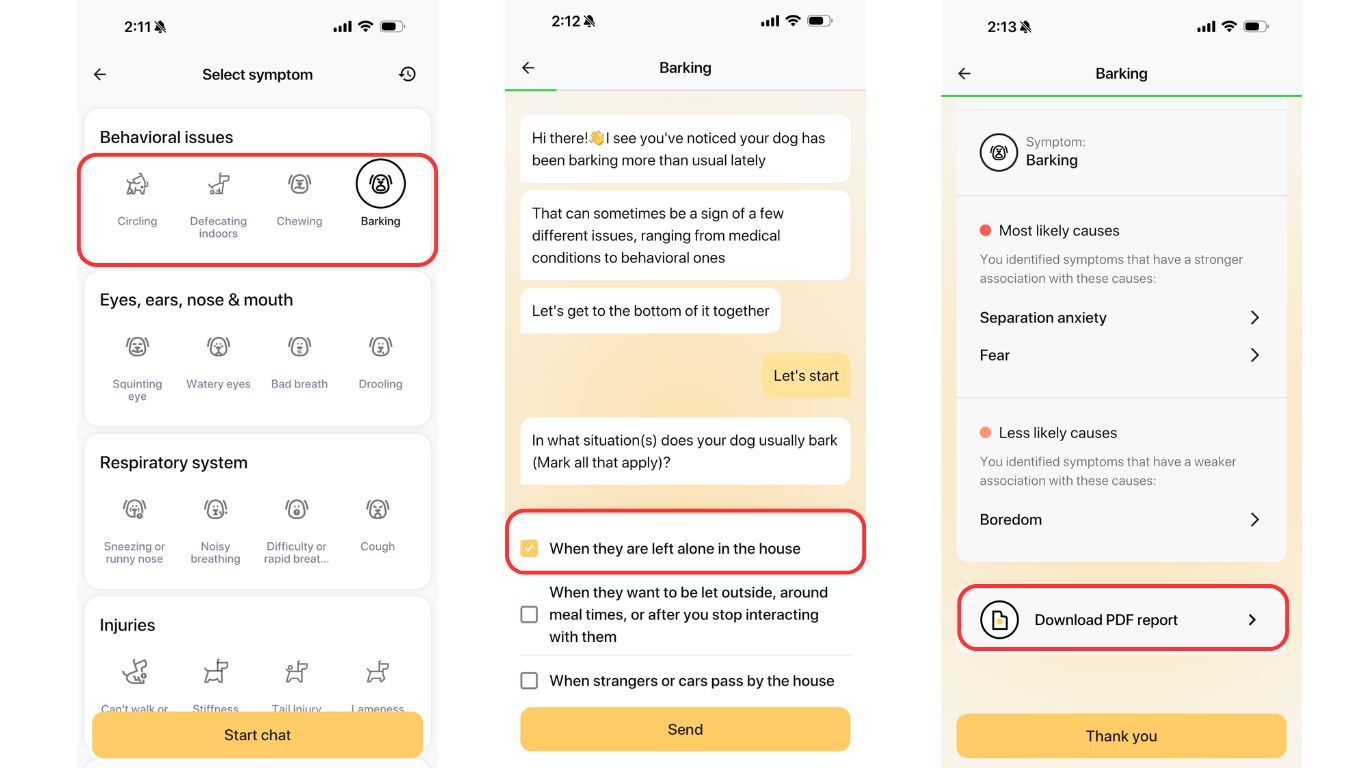On this page
Best Dog Breeds for Apartment Living
This list of best dogs for apartments includes breeds that are adaptable, quiet, and need only moderate exercise. Because some dogs, like French Bulldogs and Maltipoos, are so small, they can easily find their favorite spots in a compact space, and even some large breeds like Greyhounds and Great Danes can be surprisingly comfortable in an apartment because if it’s low-energy. What makes a good apartment dog is a dog that doesn’t bark, that is comfortable in small spaces and doesn’t require regular activity outside of the apartment.
💬 Dr. Marissa Hake, explains, “Apartment dogs do best in small spaces if they have a calm temperament and low exercise needs.

What Makes a Dog Suitable for Apartments?
Some breeds are simply better for apartment living than others based on size, energy levels, and adaptability.
Compact size – Small and medium dogs take up less room and some low power large breeds (i.e., Greyhound) adjust well to smaller quarters.
Moderate Energy – Indoor Dogs are less challenging to manage indoors.
Low Barking Rate – Will not annoy your neighbors.
House Training Ability – Since apartment dogs need to be potty trained and get used to a structured routine, they generally tend to be good learners.
Independence – Dogs that aren’t overly clingy and can handle a few hours alone without barking or trying to escape make apartment life much easier on everyone.

📖 – Dr. Marcus Dela Cruz, who suggests “choosing a breed with a sweet disposition and little separation anxiety for apartment dwellers.”

Do Small Dogs Adapt Better to Apartment Life?
Yes, smaller dog breeds are more suitable for apartment life because of their size and lower energy level. They take up less room, need smaller sleeping areas and are easier to carry on elevators or in public spaces.
Smallest Dog Breeds for Apartments:
Small dog breeds are well suited to living in small buildings or small apartments, as they are naturally smaller and require less exercise.
🐕 French Bulldog – Gentle, quiet, low-energy, top apartment dogs.
🐕 Maltipoo – Hypoallergenic, good-natured and ideal for first-time pet parents.
🐕 Cavalier King Charles Spaniel – Gentle, loving and trainable.
🐕 Boston Terrier – small, sturdy, and friendly with an adaptable personality
🐕 Bichon Frise – Hypoallergenic and they adore human companionship so ideal if you live in apartments.
These breeds only need a short daily walk or two, and are content to lounge indoors, making them well suited for apartment residents.
Is your dog barking the second you step out of the apartment❓ You’re not on your own and it’s not just “bad behavior.”
Dosty’s Symptom Checker guides you to the actual cause from anxiety, boredom, whatever it might be, and walks you through simple steps to correct it.
Can Large Dogs Live Comfortably in Apartments?
Yes, some large dog breeds milk safely live in apartments as long as they are low-energy, calm, and well-trained. Large dogs need space to run, but they don’t necessarily need continuous exercise.
Large Dog Breeds for Apartments:
Some large dog breeds can do well in apartments, however, as long as they have a calm temperament and low-energy needs.
🐕Greyhound — Earning the title of “couch potato,” they like to lounge around and require little walking.
🐕Great Dane — An unexpected gentle giant and couch-potato, but needs enough floor space to sprawl.
🐕Bernese Mountain Dog — Larger than your average house dog, these gentle giants are calm and communicative with you, although they do require daily walks.
🐕Bullmastiff — Quiet and low-energy and protective and great apartment guards.
Concerned your apartment dog isn’t exercising enough❓Weight gain creeps up quickly, particularly in enclosed spaces.
With weight tracking, you can stay on top of your dog’s health using visual graphs, ideal weight ranges, and personalized tips to manage their diet and activity on the Dosty App. In one tap, it’s your peace of mind.
👉 Stay ahead of health issues, track smarter with Dosty.

Which Dog Breeds Are Best for Apartments?
Certain breeds are naturally well-adjusted to apartment life. They tend to be quiet, have moderate exercise requirements, and are quite adaptable.
Best dog breeds for living in an apartment:
Some dogs are just naturally great apartment dogs who are quiet, more independent, and lower maintenance.
Low-Energy Breeds – (French Bulldogs, Greyhounds, Shih Tzus) are good for apartment life.
Low-shedding breeds – Toy Poodles, Maltipoos, and Bichon Frises are hypoallergenic and have low shed.
Little Biters – Basenjis, Cavalier King Charles Spaniels, and Bulldogs are bred to be quiet.
Very Adaptable Breeds – Boston Terriers and Miniature Schnauzers can be kept just about anywhere.
They require companionship and mental stimulation but can live comfortably in smaller spaces.
What Are the Quietest and Easiest Dogs for Apartments?
But barking can pose a challenge for those living in an apartment setting, so it's a good idea to look for a naturally quiet breed.
🐾 Basenji – A breed that does its barking with the yodel-like sounds they make instead.
🐾 Shih Tzu – Relaxed and tranquil, low barker unless it’s needed.
🐾 Cavalier King Charles Spaniel – Gentle and quiet – good for apartments
🐾 French Bulldog – Minimal barker, likes to lounge around the house.
Which Dogs Require the Least Space and Exercise?
The ideal apartment companion is a dog with moderate to low exercise needs.
🐾 Chihuahua – small, needs little exercise — just short walks
🐾 Pekingese – Needs only limited exercise and would rather you carry it around all day.
🐾 Italian Greyhound – Enjoys lounging around, but needs some quick walks each day.
🐾 Bulldog – Low action but cannot live without moderate exercise and maintaining health.
These breeds can remain indoors for long periods and not get destructive.
How to Care for a Dog in an Apartment?
Prioritizing a set daily routine, mental stimulus, and proper training is essential to having a happy pup even in this small environment.
- Set Up A Comfortable Home – Create a relaxed sleeping space in an area away from disturbances with a proper dog bed.
- Set Up a Potty Schedule – If you are training your dog to use potty pads indoors, do so throughout the day or establish a consistent potty schedule outdoors. Puppies and older pets may need to take breaks more often.
- Provide Mental Stimulation – Use puzzle toys, treat-dispensing toys, and interactive training to prevent boredom.
- Ensure Regular Exercise – All dogs need to be taken on a daily walk to stave off weight gain and squirminess, and this will not change when they become smaller.
- Manage Separation Anxiety – Many apartment dogs are left at home alone while owners are at work, so introducing bloodpressure-lowering routines and gradually increasing periods of alone time so that owners can leave the apartment without a fuss and with a bit of “confidence” is key.
📖 Dr. Lindsay Butzer“Devoting time to mental enrichment is just as important as giving apartment dogs physical exercise.”
Life in a small space requires structure, consistency and thoughtful care for your dog’s day. A stroll, vet appointment or training session that’s been forgotten can easily derail their routine.
🔔 Dosty’s smart reminders help you schedule daily habits, health checkups and potty breaks and stay on top of everything you need to do - even on your busiest days.
Try Reminder today and make apartment life smoother for both of you.

How to Manage Dog Barking in Small Spaces?
Irritable barking is a nuisance for those living in apartments and can also bring complaints from neighbors and worry for owners. Here’s how to minimize the barking and keep things peaceful.
Identify Barking Triggers – Dogs may bark because he is bored, anxious, or noise. Pay attention to what causes barking episodes and try to remove it or minimize it.
Use Positive Reinforcement – Instead of scolding barkers, reward dogs who stay quiet. Commands like “quiet” paired with treats reinforce good behavior.
Give Enough Exercise – Well exercised dogs bark less out of frustration Most breeds require 30 to 60 minutes of exercise per day (or more).
Block Visual Triggers – Cover up windows and the like or get frosted glass films to prevent dogs from barking at pedestrians and animals outside
Play White Noise or Music – Calming background noise masks loud external sounds and helps decrease barking caused by stress.
Dealing with barking in a small space❓ You’re not the only one, and your pup isn’t doing so without purpose.
Learn how to manage the noise with gentle, effective methods that actually work.
With the Dosty App, you’ll get:
✔ Step-by-step training guides for real results
✔ Calming routines designed for your dog
✔ Expert tips and daily reminders to stay on track
🎯 Make apartment life quieter and less stressful - start with Dosty App today.
How Much Exercise Do Apartment Dogs Need?
There are, even, an apartment civility type breeds who require an amount of physical activity. The figure depends on the dog’s breed, size, and energy level.
Exercise Needs for Apartment Dogs:
 (1)_1743592498.jpg)
💡 Tip: Use doggy daycare or Pet-sitting services if you have limited apartment space.
FAQs About Apartment Dogs
1. Can a big dog live in a small apartment?
Yes, but pick a low-energy giant breed such as a Greyhound or Great Dane.
2. What dog breeds don’t bark a lot?
Basenji, Shih Tzu and Cavalier King Charles Spaniel are naturally quiet
3. How to keep your dog happy in an apartment?
Offer walks, time for playing, and mental stimulation every day.
4. Do dogs in apartments need to be potty trained?
Yes, house trained to go outside or puppy pads inside.
5. Does that mean that small dogs are always better for apartments?
Not always.Some big, low-energy breeds take to apartment living great.
Conclusion – Which Dog Breed Is Best for Apartment Living?
Now, the best apartment dog will depend on you, your energy level, your space, your lifestyle.
For smaller apartments & less barking – French Bulldog or Cavalier King Charles Spaniel
For allergy sufferers — Bichon Frise or Toy Poodle.
For new owners – Boston Terrier or Maltipoo.
Big breed enthusiasts – Greyhound or Great Dane.
When selecting a breed, ensure this fits with your daily routine and living conditions for a happy, and hopefully stress-free experience for you both.🐶
👉 Learn how to provide the best care and keep them thriving in a small space!


